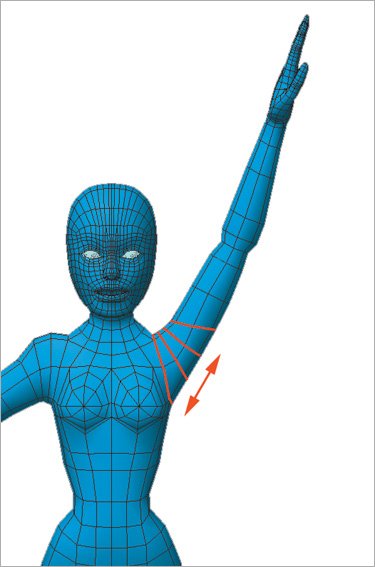Chapter Two. Modeling Characters
Two Modeling Characters

After you've designed your character, you need to turn it into a 3D model. This model will certainly need to look good, but it must also meet some technical requirements. Most models need to be deformed during animation, so your model must be constructed in a way that allows it to deform naturally and easily. Building your character properly before you start animating will save you headaches in the long run.
Modeling is an art unto itself, and in many ways, it's like digital sculpting. Becoming a good sculptor requires a good eyeand a good grasp of volume and form. And, as with all arts that center on the human form, it's a big help if you have a good understanding of anatomy. Taking time to learn sculpting in a physical medium, such as clay, can also improve your digital sculpting skills.

Chapter One. Basics of Character Design
- Chapter One. Basics of Character Design
- Approaching Design as an Artist
- Design Styles
- Designing a Character
- Finalizing Your Design
Chapter Two. Modeling Characters
Chapter Three. Rigging Characters
- Chapter Three. Rigging Characters
- Hierarchies and Character Animation
- Facial Rigging
- Mesh Deformation
- Refining Rigs
- Conclusion
Chapter Four. Basics of Animation
- Chapter Four. Basics of Animation
- Understanding Motion
- Animation Interfaces
- The Language of Movement
- Secondary Action
- Conclusion
Chapter Five. Creating Strong Poses
- Chapter Five. Creating Strong Poses
- Posing the Body Naturally
- Creating Appealing Poses
- Animating with Poses
- Conclusion
Chapter Six. Walking and Locomotion
- Chapter Six. Walking and Locomotion
- The Mechanics of Walking
- Animating Walks
- Beyond Walking
- Adding Personality to a Walk
- Transitions
- Conclusion
Chapter Seven. Facial and Dialogue Animation
Chapter Eight. Animal Motion
Chapter Nine. Acting
- Chapter Nine. Acting
- Acting Vs. Animating
- Acting and Story
- Acting Technique
- Acting and the Body
- Other Techniques
- Conclusion
Chapter Ten. Directing and Filmmaking
EAN: 2147483647
Pages: 84
